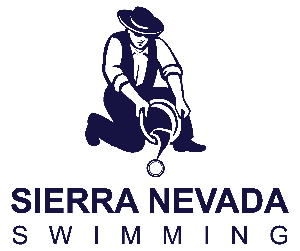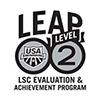Safety Forms and Resources
- Sierra Nevada Operational Risk/Safety Chair: Stephen Adams
- USA Swimming (USAS) Operational Risk Webpage
TEAMS PRACTICE
*Note any injuries sustained while performing starts will not be covered by RMS if dive certification forms are not documented for each swimmer annually. It is the responsibility of the clubs to manage documentation.
PRACTICE AND MEETS
- USA Swimming Landing Page: Report of Occurrence Instructions & Forms
- Report of Occurrence (ROO) Online Form
- Report of Occurence PDF File Form
Note: even if facility incident report is completed, USA Swimming ROO must also be completed.
LCM Dives - Mid-Pool Barrier
For Sierra Nevada Swimming LCM meets, a dive barrier may be placed at the mid-pool point to allow diving at both ends of the pool. A pool noodle tied to each lane line is an acceptable barrier.
Concussions
The State of California has modified the existing law concerning Concussion Protocol & Requirements to apply to youth sport organizations, including swimming (CA HSC, Division 106, Part 2, Chapter 4, Article 2.5, 124235)
A. The law requires that:
1. a youth athletic program must immediately remove an athlete from an athletic activity for the remainder of the day, if the athlete is suspected of sustaining a concussion or head injury, and prohibit the athlete from returning to the activity until the athlete is evaluated by a licensed health care provider, trained in the management of concussions, and acting within the scope of his or her practice.
2. the athlete must receive written clearance from the licensed health care provider to return to the athletic activity
3. if the athlete is diagnosed with a concussion, the must go through a graduated return to play protocol of no less than seven (7) days under the supervision of a licensed health care provider
4. a youth sports organization must notify the parents or guardians of athletes 17 or younger who have been removed from athletic activities due to suspected concussions
B. Coaches and Officials must successfully complete the concussion and head injury education required under the law at least once either online or in person. The following courses satisfy the requirements. Coaches and Officials must keep evidence of passing these courses to provide to the LSC.
C. Youth Sports Organizations must also give a concussion and head injury information sheet to each athlete. The acknowledgement form shall be signed and returned by the athlete and, if the athlete is 17 years of age or younger, shall also be signed by the athlete's parent or guardian, before the athlete initiates practice or competition. The information sheet and acknowledgement may be sent and returned through an electronic medium.
1. USA Swimming: Concussion Information Sheet for Parents and Swimmers
2. Concussion Information Acknowledgement for the State of California (Template)
D. USA Swimming has also developed concussion and head injury educational material for coaches, officials and administrators.
1. USA Swimming: Concussion at the Pool Checklist
Water Temperature
- USAS 103.7 /LSC/Water temperature between 25 to 28 degrees Celsius (77 to 82.4 degrees Fahrenheit) shall be maintained for competition.
- SNS advises that for practices water temperature below 77 degrees F or above 82 degrees F, swimmers be closely monitored for cold/heat related symptoms.
Air Quality
- SNS is currently seeking advice for recommendations for Air Quality during practices and meets
Lightning Safety
- The following advice is offered by the National Weather Service, regardless of location: If thunder is heard, a thunderstorm is close enough to pose an immediate threat. All water activities should be suspended and everyone should be instructed to take shelter in a safe place, preferably a sturdy building, or even a hard-topped vehicle with the windows closed. The "30/30 Rule" should be your guide: When you see lightning, count the time until you hear thunder. If the interval is 30 seconds or less, the thunderstorm is close enough to be dangerous. Seek shelter immediately. Stay indoors until 30 minutes after hearing last thunder. Coaches, officials and meet directors should act accordingly when conducting workouts or meets. Pool operators should consider incorporating lightning safety practices in their pool operations procedures.
Pool Covers
- When swimmers are trapped under pool covers the consequences can be deadly. Sierra Nevada Swimming advises member clubs that while it's the responsibility of pool operators to establish policies and procedures for use of pool covers, it is essential that clubs be aware of the operator's regulations, policies and procedures, and ensure that both coaches and athletes comply.
Poolside Electrical Safety
- USA Swimming rules require that al equipment permanently or temporarily connected to electrical circuits at line voltages must be protected by ground-fault interrupter (GFI) devices. State and local regulations provide more detailed requirements. Note, pool operators are bound to follow these mandates. Some pool operators have adopted policies on use and placement of electrical equipment on their decks. Pool users should discuss these policies before and during meets and practices.
General Safety
- NOTE: Diving boards, slides, climbing walls (in the pool) are NEVER covered under Risk Management Services.




